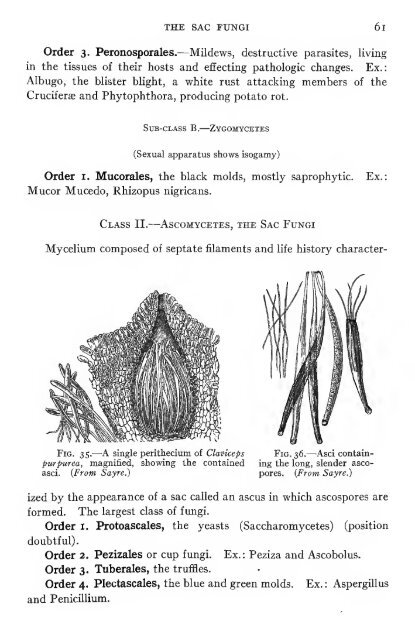Pharmaceutical botany - Lighthouse Survival Blog
Pharmaceutical botany - Lighthouse Survival Blog
Pharmaceutical botany - Lighthouse Survival Blog
Create successful ePaper yourself
Turn your PDF publications into a flip-book with our unique Google optimized e-Paper software.
THE SAC FUNGI 6<br />
Order 3. Peronosporales.—Mildews, destructive parasites, living<br />
in the tissues of their hosts and effecting pathologic changes. Ex.:<br />
Albugo, the blister blight, a white rust attacking members of the<br />
Cruciferae and Phytophthora, producing potato rot.<br />
Sub-class B.— Zygomycetes<br />
(Sexual apparatus shows isogamy)<br />
Order i. Mucorales, the black molds, mostly saprophytic. Ex.:<br />
Mucor Mucedo, Rhizopus nigricans.<br />
Class II. Ascomycetes, the Sac Fungi<br />
Mycelium composed of septate filaments and life history character-<br />
Fig. 35.—A single perithecium of Clmiceps Fig. 36.—Asci containpurpurea,<br />
magnified, showing the contained ing the long, slender ascoasci.<br />
(From Sayre.) pores. (From Sayre.)<br />
ized by the appearance of a sac called an ascus in which ascospores are<br />
formed. The largest class of fungi.<br />
Order i. Protoascales, the yeasts (Saccharomycetes) (position<br />
doubtful).<br />
Order 2. Pezizales or cup fungi. Ex. : Peziza and Ascobolus.<br />
Order 3. Tuberales, the truffles.<br />
Order 4. Plectascales, the blue and green molds. Ex. : Aspergillus<br />
and Penicillium.
















